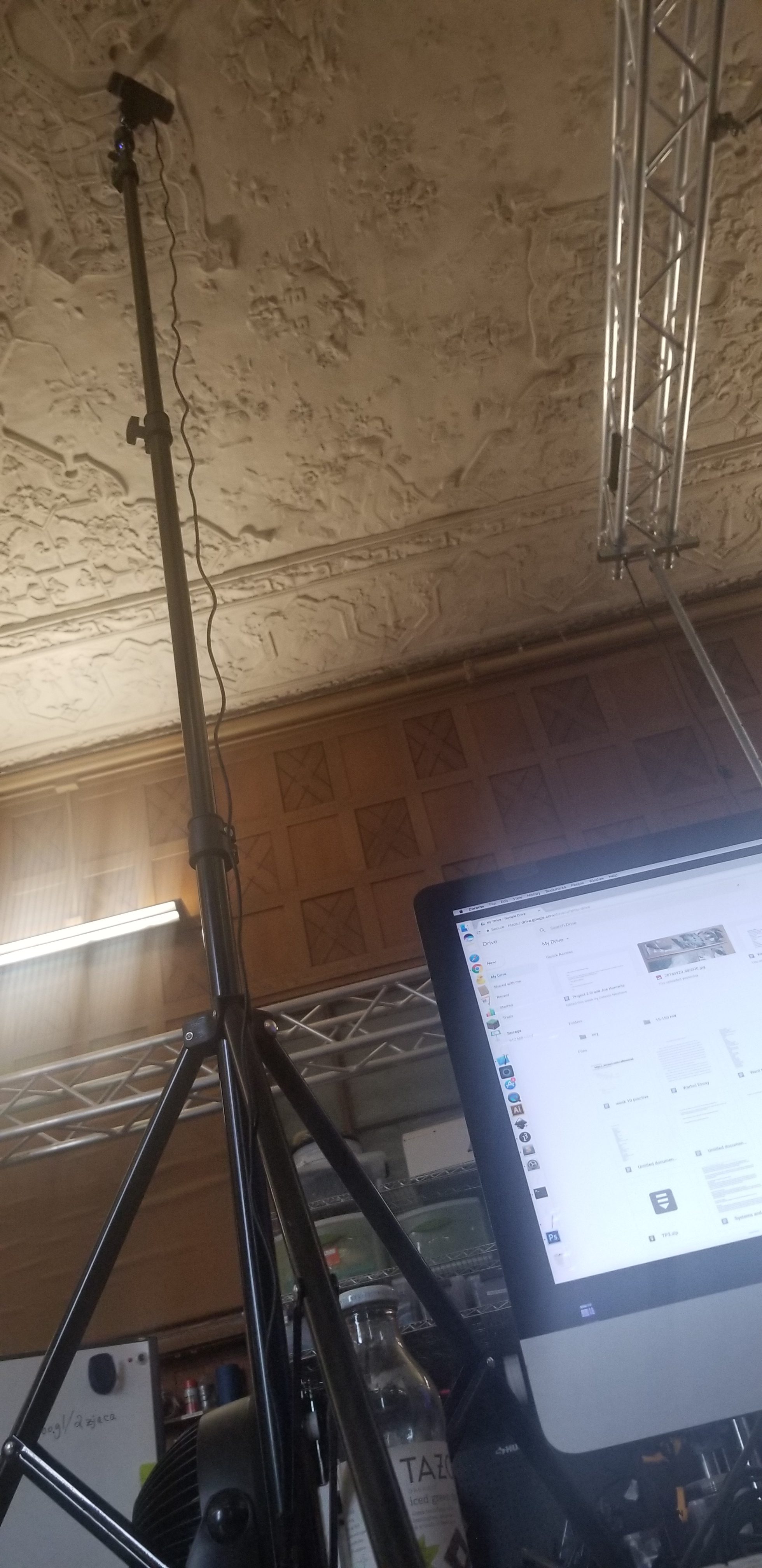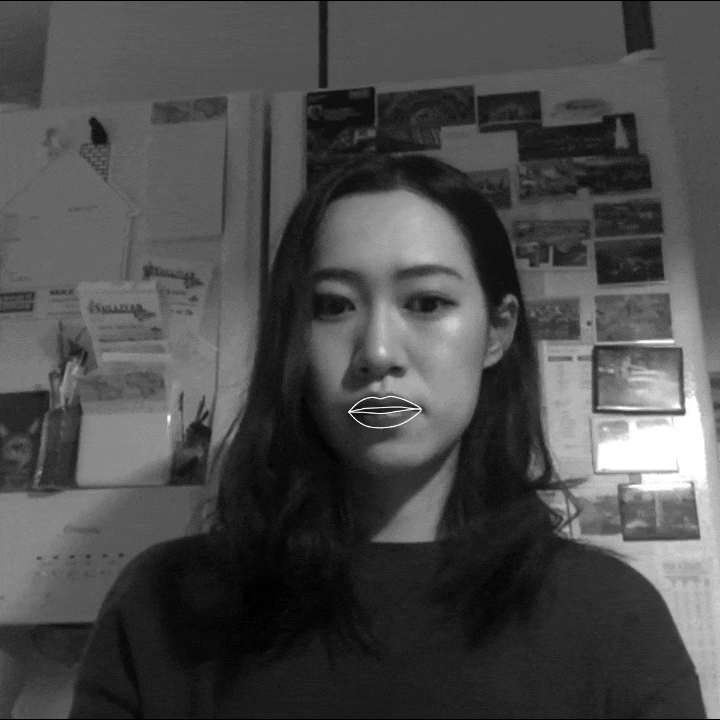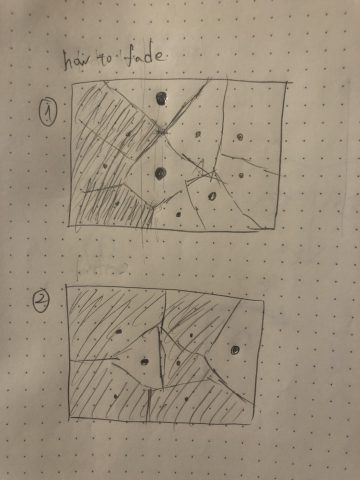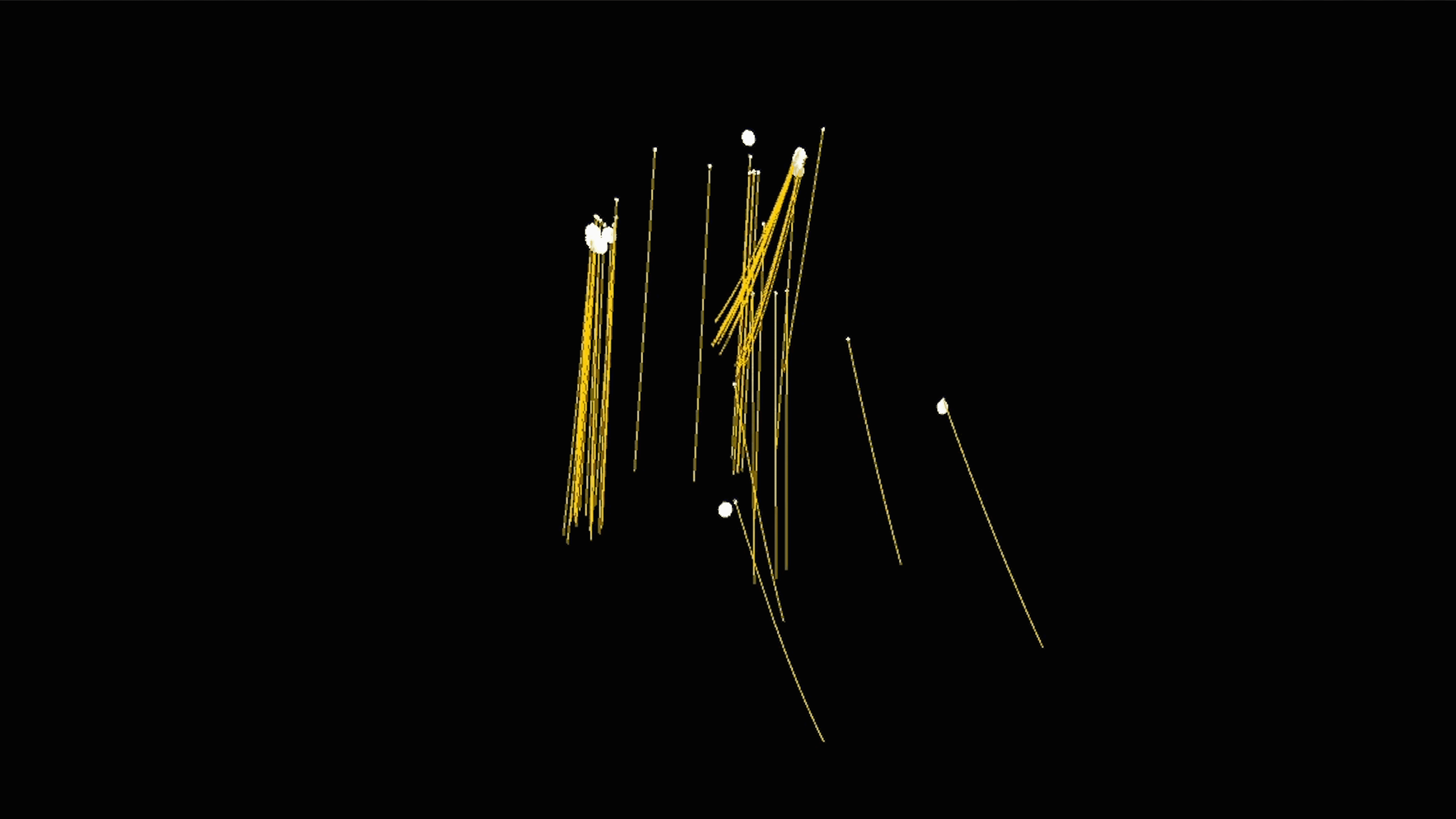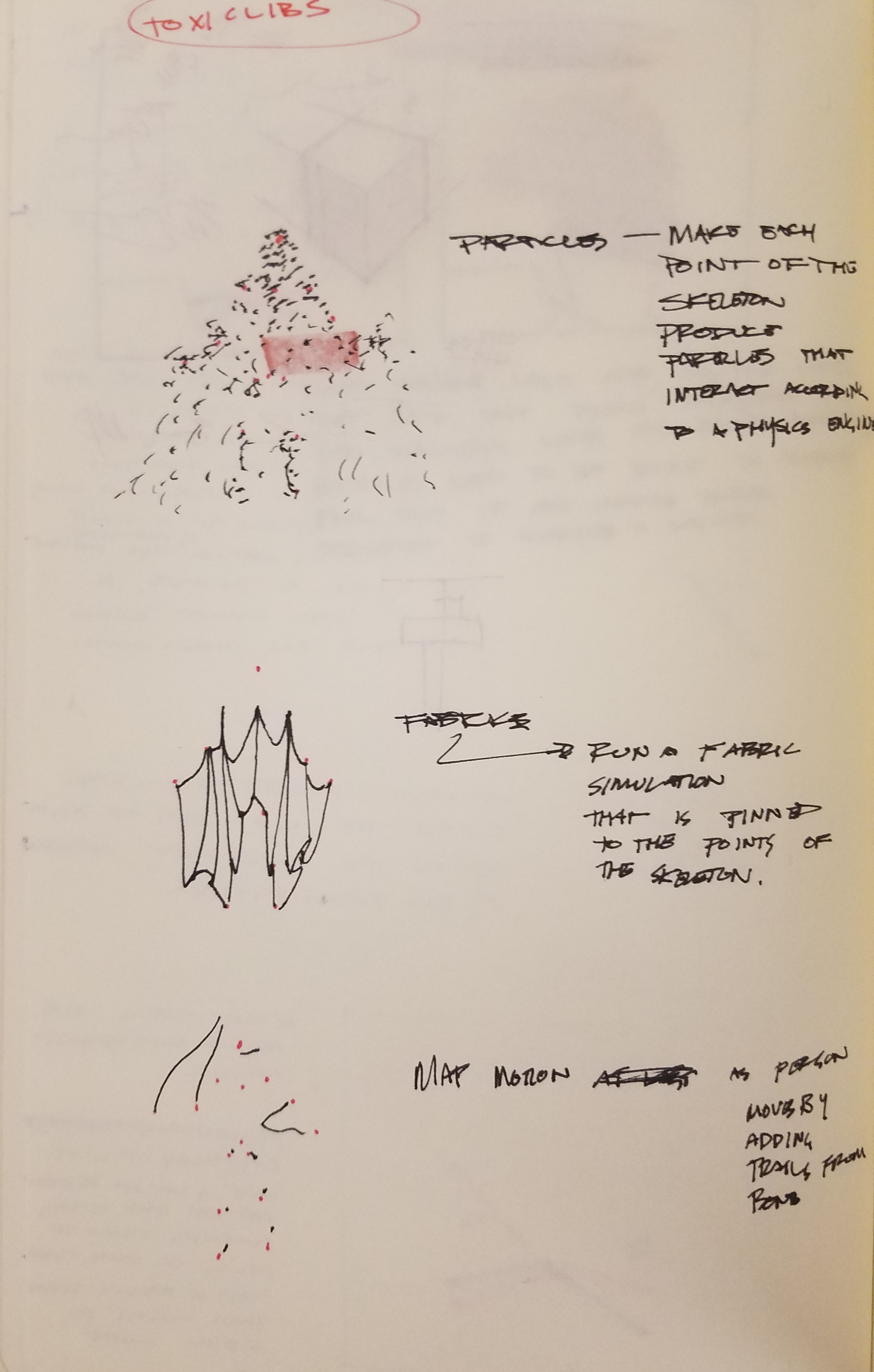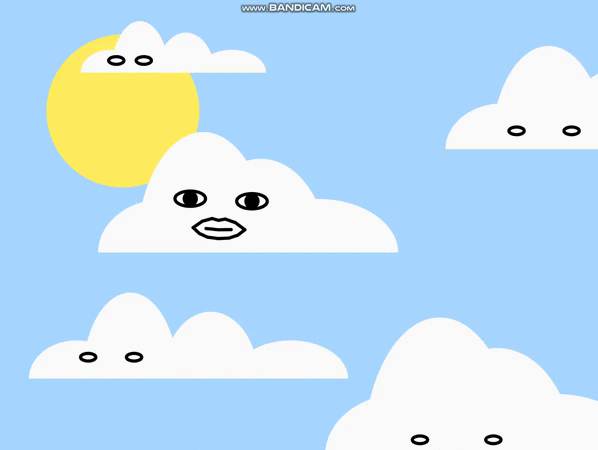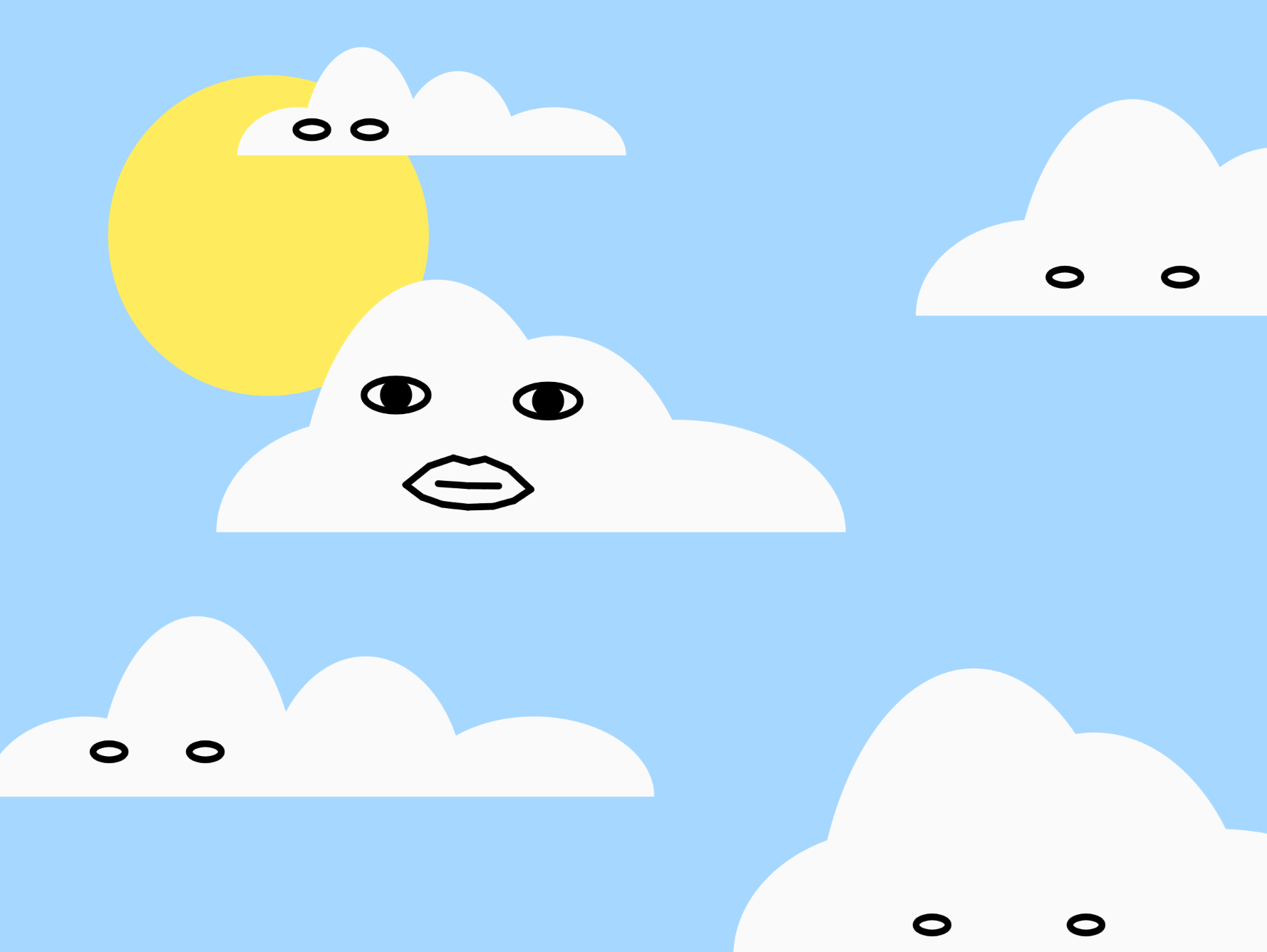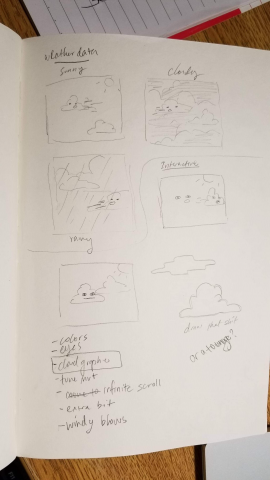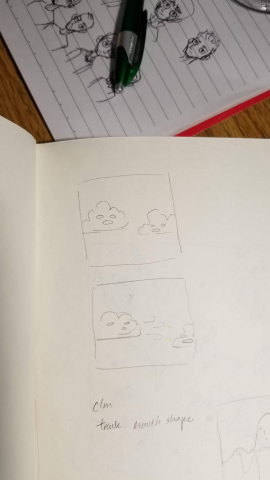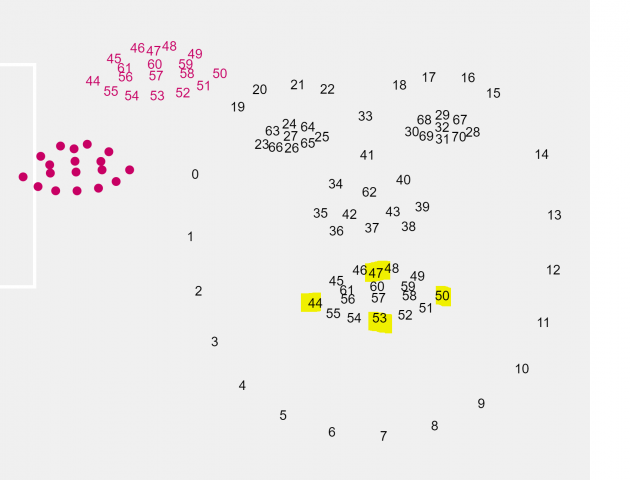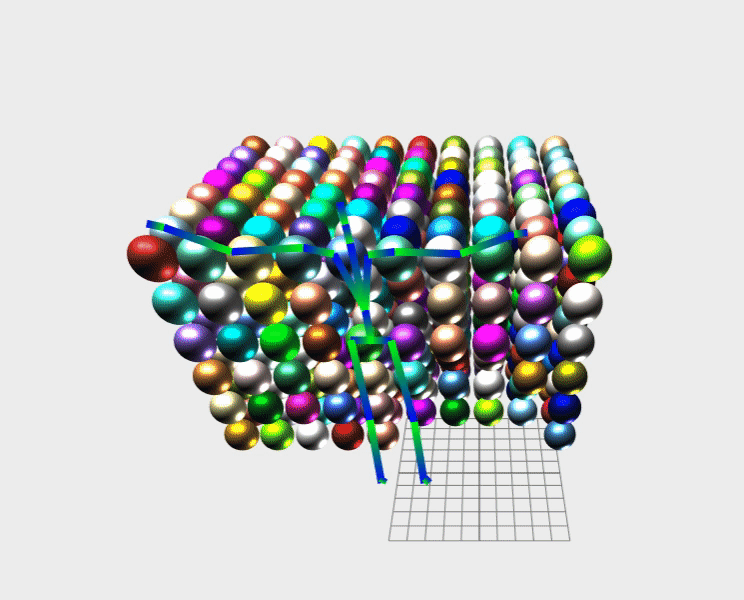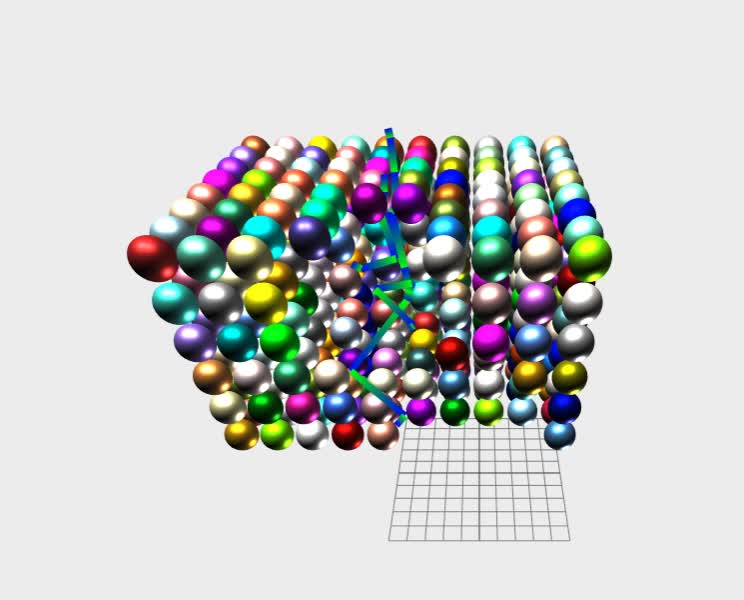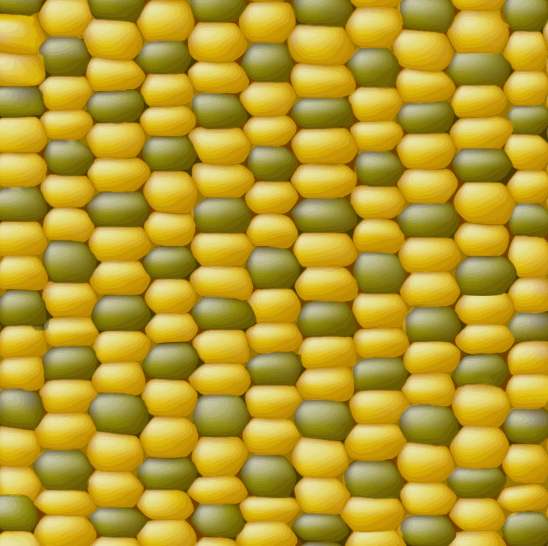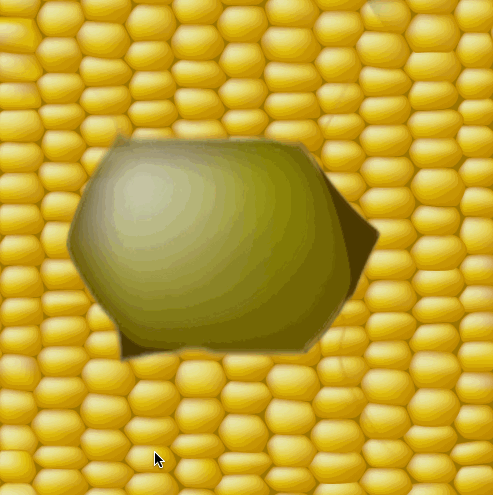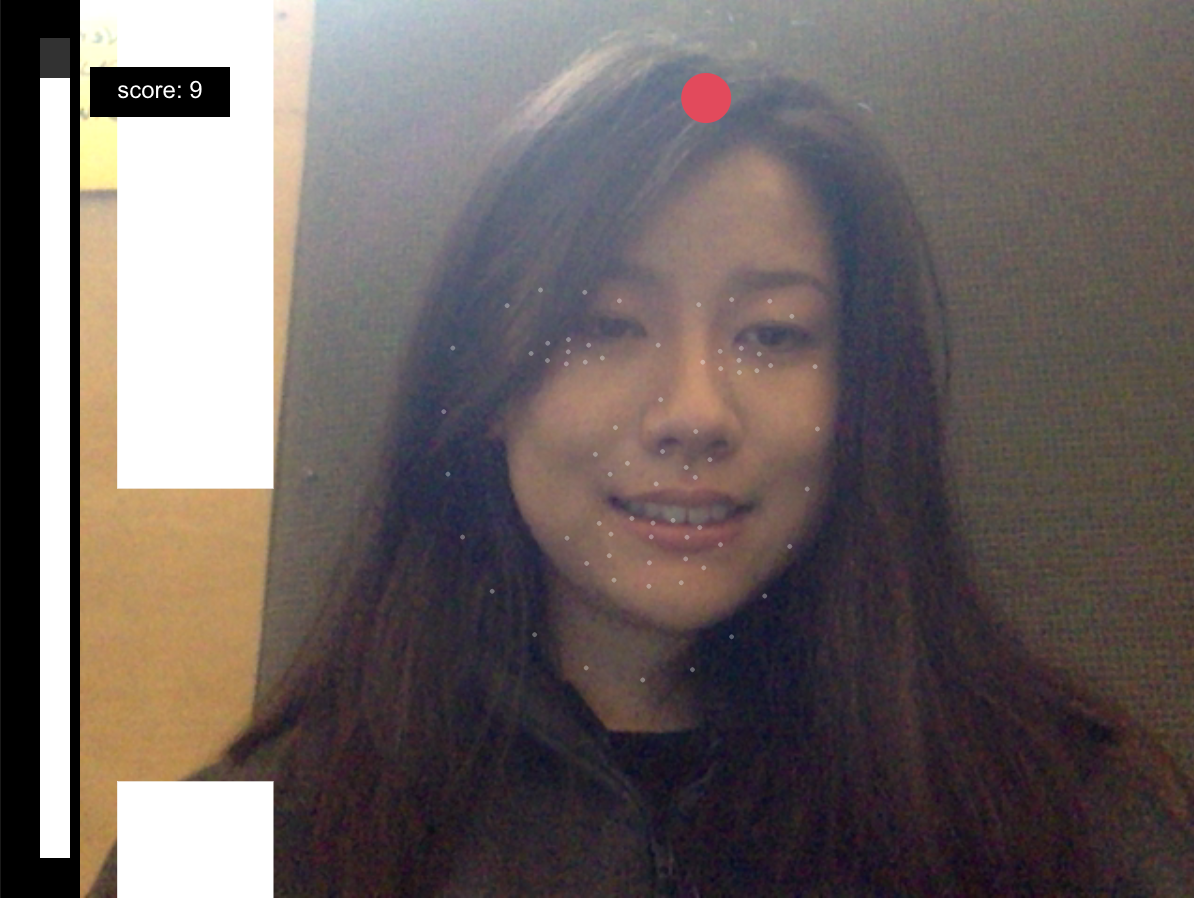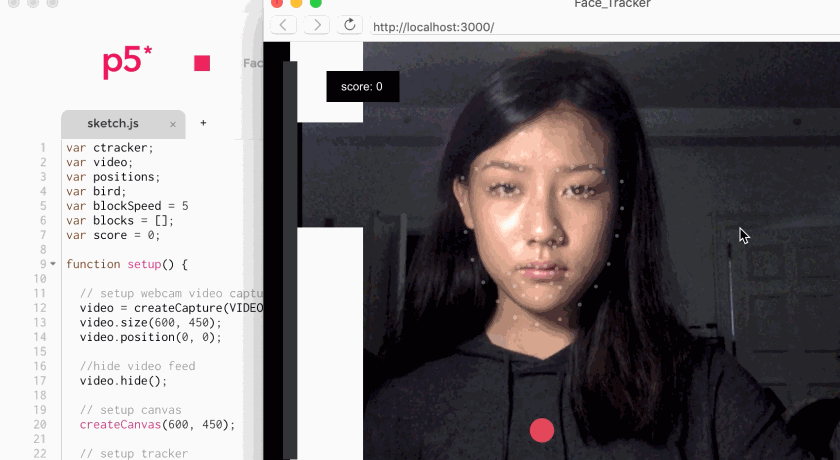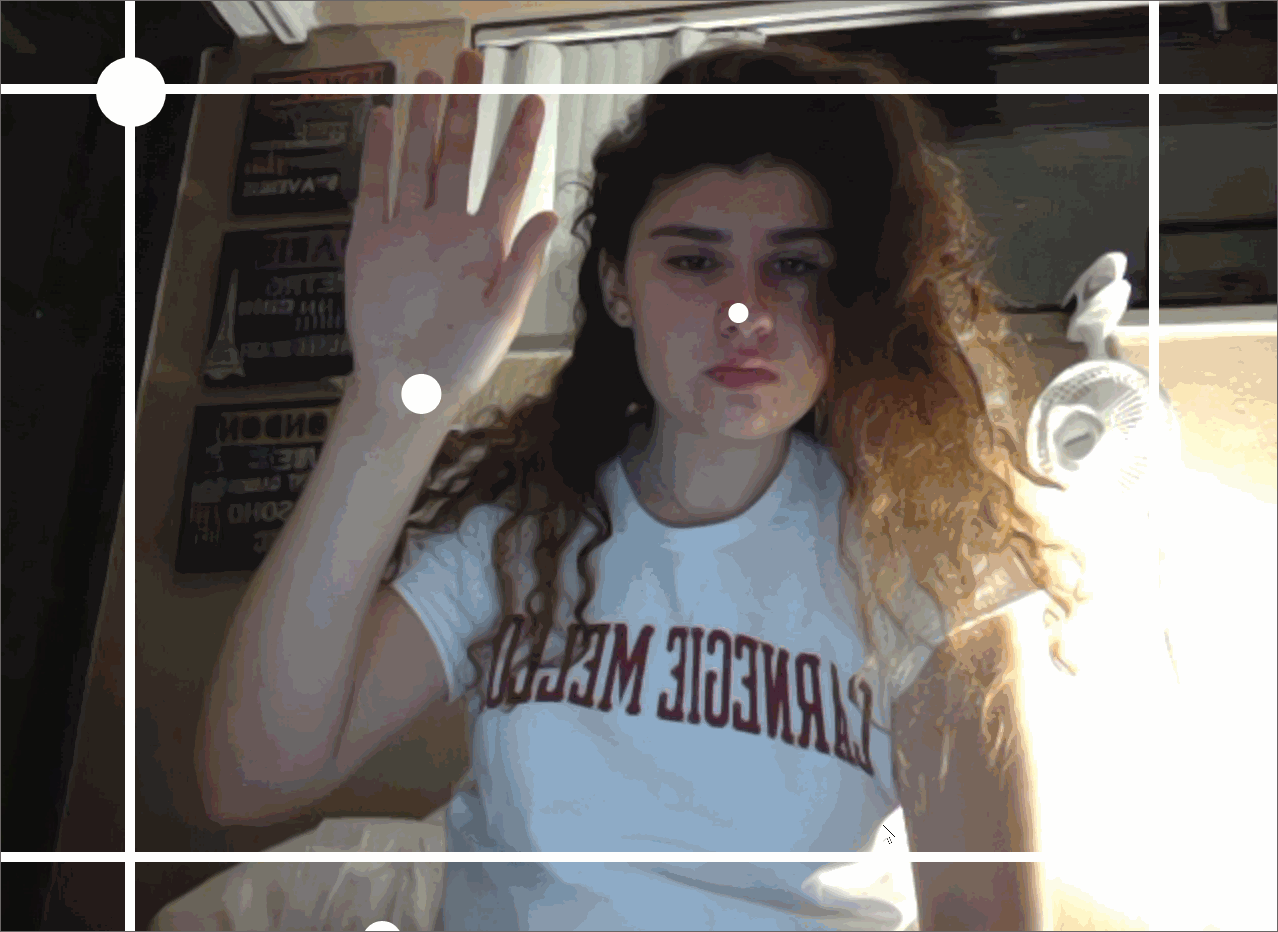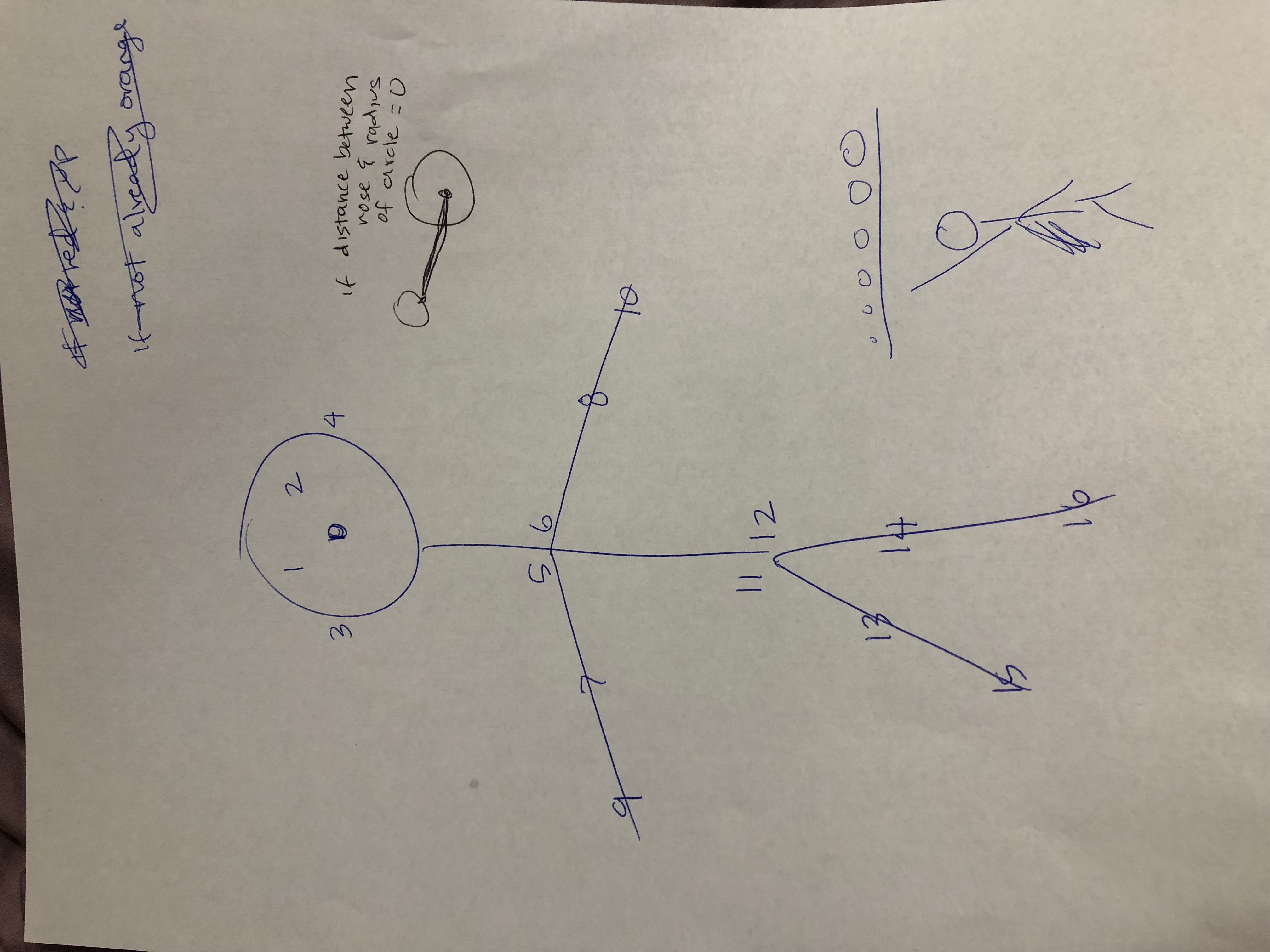/* face-ctrl.js */
var ctracker;
//var mouth_pos;
var mouth_x = 300;
var mouth_y = 300;
var facingLeft, facingRight;
var blowRatio, turnRatio;
var m_width, m_height;
var ox,oy;
var prev;
var leye, reye;
var pos1 = [];
var pos2 = [];
var posMid = [];
function setup_clm(){
//setup camera capture
var videoInput = createCapture(VIDEO);
videoInput.size(w/4,h/4);
//uncomment to view video
//videoInput.position(w/4*3, h/4*3);
//videoInput.hide();
ctracker = new clm.tracker();
ctracker.init(pModel);
ctracker.start(videoInput.elt);
mouth_x = 300;
mouth_y = 300;
}
function updateVars(mx, my, scale){
var positions = ctracker.getCurrentPosition();
for (var i=positions.length-1; i<positions.length; i++) { ox = positions[60][0]*scale; oy = positions[60][1]*scale; m_width = (positions[44][0] - positions[50][0]); m_height = (positions[47][1] - positions[53][1]); turnRatio = ((positions[44][0]-positions[1][0])/(positions[13][0]-positions[50][0])); facingLeft = turnRatio > 1.5;
facingRight = turnRatio < 1;
}
}
function isBlowing(){
return blowRatio < 2.5;
}
function drawBlowHole(mx, my, scale){
var positions = ctracker.getCurrentPosition();
blowRatio = m_width/m_height;
push();
noFill();
strokeWeight(5);
var mw = m_width*scale;
var mh = m_height*scale;
if (isBlowing()){
//wind
stroke(0);
var bx1 = mx + (facingLeft ? -1 : 1)*mw*2;
var bx2 = mx + (facingLeft ? -1 : 1)*mw*3;
var by = my;
var sep = 20;
push();
strokeWeight(3);
line(bx1, by, bx2, by);
line(bx1, by+sep, bx2, by+sep);
line(bx1, by-sep, bx2, by-sep);
pop();
}
//face
for (var i=0; i<positions.length; i++) {
var x = positions[i][0]*scale;
var y = positions[i][1]*scale;
push();
stroke(0);
strokeWeight(scale*1.2);
strokeJoin(ROUND);
strokeCap(ROUND);
//EYES
if (i == 27 || i==32){
stroke(0);
noFill();
pos1[0]= mx + x-ox;
pos1[1] = my + y-oy +50;
ellipse(pos1[0],pos1[1],40,20);
fill(0);
noStroke();
ellipse(pos1[0],pos1[1],20,20);
}
//REAL MOUTH
if(i<44 || i>61) continue;
if (i==58 && !isBlowing()){
i=62;
continue;
}
if (i == 55) pos2 = [positions[44][0]*scale,positions[44][1]*scale];
else if (i == 61) pos2 = [positions[56][0]*scale,positions[56][1]*scale];
else pos2 = [positions[i+1][0]*scale,positions[i+1][1]*scale,x,y];
pos1[0]= mx + x-ox;
pos1[1] = my + y-oy;
pos2[0] = mx + pos2[0]-ox;
pos2[1] = my +pos2[1]-oy;
posMid[0] = (pos1[0] + pos2[0])/2;
posMid[1] = (pos1[1] + pos2[1])/2;
line(pos1[0],pos1[1],posMid[0],posMid[1]);
line(pos2[0],pos2[1],posMid[0],posMid[1]);
}
pop();
}
/* sketch.js */
var socket = io();
var clients = {};
var data = {};
var w = 800;
var h = 600;
var size;
var videoInput;
var ctracker;
var claude;
var clouds = [{x:100,y:100,scalar:100, w:3, h:4},
{x:200, y:h-100, scalar:-150, w:5, h:7},
{x:w-300, y:h, scalar: 70, w:8, h:5},
{x:w-100, y:200, scalar: -50, w:6, h:6}
]
var t = 0;
var Engine = Matter.Engine,
Render = Matter.Render,
World = Matter.World,
Bodies = Matter.Bodies,
Body = Matter.Body,
Constraint = Matter.Constraint;
function setup_matterjs(){
engine = Engine.create();
world = engine.world;
engine.world.gravity.y = 0;
engine.timing.timeScale = 0.2;
//makeBoundaries(width,height);
Engine.run(engine);
}
function setup() {
// setup canvas
var cnv = createCanvas(w,h);
cnv.position(0, 0);
setup_clm(); //face-ctrl
setup_matterjs();
size = 50;
claude = new Cloud(mouth_x, mouth_y, size);
World.add(world, claude.body);
started=0;
}
function drawCloudShape(x,y,h,w){
push();
fill(250, 250, 250);
noStroke();
arc(x, y, 25 * h, 20 * h, PI + TWO_PI, TWO_PI);
arc(x + 10*w, y, 25 * h, 45 * h, PI + TWO_PI, TWO_PI);
arc(x + 25*w, y, 25 * h, 35 * h, PI + TWO_PI, TWO_PI);
arc(x + 40*w, y, 30 * h, 20 * h, PI + TWO_PI, TWO_PI);
pop();
}
function drawCloud(x,y,w,h){
updateVars(x,y,w/2);
drawCloudShape(x-w*10,y+h*7,w,h);
drawBlowHole(x,y,w/2);
}
function drawSun(){
push();
noStroke();
fill('#FFEC5E');
var sun = {x: map(hour(), 0, 60, 150, w-150), y: 150, r:200};
ellipse(sun.x, sun.y, sun.r);
pop();
}
function draw() {
background('#A6D7FF');
drawSun();
sass();
push();
//uncomment to mirror
//translate(w,0);
//scale(-1.0,1.0);
strokeWeight(1);
claude.update;
drawCloud(claude.pos.x, claude.pos.y, 7, 5);
pop();
var wind = 0.1 * (facingLeft ? -1 : 1);
var force = {x:wind,y:0};
if (blowRatio < 2) Body.applyForce(claude.body, claude.pos, force);
for(var i =0; i< clouds.length; i++) otherClouds(clouds[i]); } function sass(){ push(); if (claude.pos.x > w+200 || claude.pos.x < -200){
textFont('Georgia');
textSize(30);
textAlign(CENTER);
strokeWeight(1);
fill(0);
text("the real world doesn't have wrap-arounds, chump\n go outside",w/2,h/2);
}
pop();
}
function makeBoundaries(w,h){
console.log("width="+str(w)+" height="+str(h));
var strength = 20;
var options = {isStatic:true, restitution: 0.2};
var bottom = Bodies.rectangle(w/2, h, w+50, strength, options);
var top = Bodies.rectangle(w/2, 0, w+50, strength, options);
var left = Bodies.rectangle(0, h/2, strength, h+50, options);
var right = Bodies.rectangle(w, h/2, strength, h+50, options);
World.add(world,top);
World.add(world,bottom);
World.add(world,left);
World.add(world,right);
}
function otherClouds(cloud){
var scalar = cloud.scalar;
var x1 = cloud.x + (scalar * cos(t));
drawCloudShape(x1, cloud.y, cloud.w, cloud.h);
//fill(0); noStroke();
stroke(0); noFill();
var dir = cloud.scalar < 0 ? 1 : -1;
var y = cloud.y-cloud.h*4;
ellipse(x1 + cloud.w*15, y,20,10);
ellipse(x1 + cloud.w*3, y, 20, 10);
//ellipse(x1, cloud.y, 70, 70); //mouth?
t+=0.005;
} |
